Welsh Food: Basic Overview
Common Ingredients
Common Cooking Methods
Courses
Meals
Key Taste
Eating Etiquette
Meal Presentation
Culinary Festivals
Influence and Fusion
Popular Types of Welsh Food
-
Stews
In Welsh cuisine, stews are important warming meals throughout the cooler months.
These dishes often feature a mix of meats (such as lamb or beef), root vegetables (like potatoes, carrots, and swedes), and leeks, a national symbol of Wales.
Stews are typically slow-cooked.
-
Pancakes
These dishes often include ingredients readily available in the Welsh countryside, such as milk, flour, and eggs.
Some of them are daily food in Wales.
A famous pancake in this country is Crempog. These are thicker and spongier than the typical pancake and are often made with buttermilk.
-
Cakes and Pastries
Cakes and pastries are locals’ favorite recipes in Wales. They are sweet, baked treats, often enjoyed with tea.
They celebrate Welsh culture and hospitality, often shared during family gatherings, festivals, and teatime.
Welsh dishes are a combination of the cooking styles, traditions, and recipes associated with Wales, considered symbols of Welsh food. Traditional Welsh cooking emerged from the daily lives of working people, who utilized the limited resources available to them.
The cuisine is notably influenced by the extensive sheep farming across Wales, with lamb and mutton being staple meats, alongside beef and dairy products from widespread cattle farming.
The coastal regions contribute a strong fishing culture, adding seafood to the Welsh diet. Historically, the variety of vegetables was limited, with leeks and cabbages being among the few commonly used.
Over time, Welsh cuisine has evolved, incorporating a broader range of ingredients as the number of restaurants and gastropubs in the country has grown, reflecting both traditional tastes and modern culinary trends.
19 Popular Welsh Dishes with Filters
Let’s explore the exciting fares coming from Wales, using the filter system to check out these dishes in alphabetical order, tastes, ingredients, dish types, global popularity, and cooking methods.
Also, here are some main characteristics of the most beloved dishes, traditional, national, street food, and exotic dishes in Wales.
Welsh Rarebit
- Traditional
Welsh rarebit is a savory dish consisting of a hot cheese sauce served over toasted bread. Commonly, the cheese sauce can vary, with some recipes using a simple melted cheese-on-toast approach.
Alternatively, the toast can have ale, mustard, cayenne pepper, paprika, wine, or Worcestershire sauce.
Variants of the dish include the addition of an egg on top, known as buck rarebit, or blended with tomato for a “blushing bunny”. The Welsh love their toast so much that they dedicate each year’s September 3rd to National Welsh Rarebit Day.
Bara Lawr
- Exotic
- Traditional
Bara lawr, or laverbread, is a seaweed-based Welsh delicacy made from laver, a type of seaweed primarily found along the west coast of Great Britain and Ireland.
This edible seaweed is boiled for several hours and then minced or pureed into a gelatinous paste, which can be eaten as is or rolled in oatmeal and fried.
Surprisingly, laverbread has a distinctive flavor likened to olives and oysters. It is often served as part of a Welsh breakfast alongside bacon and cockles, or used to make sauces and soups.
Bara Brith
- Traditional
Bara brith is a Welsh tea bread traditionally combined with dried fruits and spices soaked in tea to create a rich, flavorful loaf. Originating from Wales, its name means “speckled bread” in Welsh, referring to the mixed fruits used.
Ideal for serving at tea time, bara brith is enjoyed sliced with butter. Over time, it has many variations, including ones without yeast, using self-raising flour instead.
To present the bara brith the right way, I suggest cutting the loaf into slices and spreading them with butter for serving.
Leek Soup
- Traditional
Leek soup is a Welsh culinary creation made with potatoes, leeks, chicken broth, and heavy cream, seasoned with salt, pepper, and spices. The potatoes are typically diced and cooked in broth, while leeks are sautéed before combining all ingredients.
As a staple of Welsh cuisine, known as cawl cennin, leek soup is a favorite for its simplicity and depth of flavor.
Cawl
- National
- Traditional
Cawl is a traditional Welsh soup, often considered the national dish of the country, centering around lamb or beef, leeks, potatoes, swedes, carrots, and other seasonal vegetables.
Originating from the 14th century, cawl was a winter staple in south-west Wales, evolving over time to include potatoes. The meat and vegetables are simmered together in water, sometimes thickened with oatmeal or flour.
Historically served in two courses, first the broth, then the meat and vegetables, cawl is now commonly enjoyed as a hearty single dish.
Selsig Morgannwg
- Traditional
Selsig Morgannwg is a vegetarian Welsh sausage made primarily from cheese (often Caerphilly), leeks, and breadcrumbs. These sausages are named after the historic county of Glamorgan in Wales.
These vegetarian sausages started gaining popularity during the Second World War due to meat shortages. Modern variations may include onions or different herbs and spices, offering a versatile and flavorful alternative to meat-based varieties.
Welsh Cheese
- Traditional
Welsh cheese is a variety of cheeses produced in Wales, notable for their distinct flavors and textures.
Among the most famous is Caerphilly, a hard, crumbly cheese that originated around the town of Caerphilly. It is known for its light color, mild taste, and slightly tangy lemon flavor.
Another notable Welsh cheese is Y Fenni, made from cheddar blended with mustard seed and ale, named after the Welsh name for Abergavenny. These cheeses are often celebrated in local festivals and used in traditional Welsh dishes.
Tatws Pum Munud
- Traditional
Tatws pum Munud is a Welsh stew known for its simplicity and quick cooking time. The stew is a combination of smoked bacon, stock, potatoes, and other vegetables such as onions, carrots, and peas.
Unique for its preparation, all main ingredients are sliced to lie flat, allowing it to be cooked in a large frying pan rather than a pot. This method results in a dish that’s served on a plate, often accompanied by crusty bread and butter.
To enhance the flavor, sometimes Worcestershire sauce is added. There’s even a variant like tatws popty (or tatws pobdu), which uses chunkier vegetables and is oven-cooked.
Conwy Mussels
- Traditional
Conwy mussels are a renowned delicacy from the historic Welsh town of Conwy, situated on the north coast. Thriving in the River Conwy and the Irish Sea, these mussels are favored for their distinctive taste.
Once primarily harvested for pearls in the 19th century, with the meat fed to livestock, they have now become a favorite gourmet.
They can be prepared either fried in oil with cream and shallots or steamed in wine, and are best enjoyed when complemented with appropriate side dishes.
Faggots and Peas
- Traditional
Faggots and peas are a traditional dish in the United Kingdom, especially in Wales and the Midlands. This combination is a dish of meatballs made from minced off-cuts and offal of pork, such as heart, liver, and bacon.
The protein is mixed with herbs and breadcrumbs before being wrapped in caul fat and baked, then served with processed peas and a savory, thick gravy.
Scouse
- Traditional
Scouse is a popular stew originating from the port city of Liverpool, which later gained popularity in Wales. Derived from ‘lobscouse’, a similar stew eaten by sailors from Northern Europe, the name was eventually shortened to ‘scouse’.
The stew is prepared with large chunks of beef, potatoes, carrots, and occasionally ale for added flavor. For serving, scouse is best enjoyed with bread, pickled cabbage, or beetroot.
Wyau Ynys Mon
- Traditional
Wyau ynys mon, also known as Anglesey eggs, is a traditional Welsh egg specialty originating from Anglesey, the largest island off the northwest coast of Wales.
This dish revolves around baking hard-boiled eggs over a bed of mashed potatoes and leeks. Ideally, the base for an Anglesey egg needs to have a thick consistency for serving with a creamy sauce.
The final dish is served with the sauce poured over halved boiled eggs, often accompanied by cheese, bread, or a meat dish.
Gwledd y Cybydd
- Traditional
Gwledd y cybydd, or Miser’s feast in Welsh, is a Welsh fare that calls for boiled potatoes, bacon or pork chops, and pepper. These components are either baked or simmered in a pot until tender.
Gwledd y cybydd serves as an ideal dinner option, offering a quick and easy solution. Commonly, the dish is enjoyed with mashed potatoes combined with the liquid of gwledd y cybydd.
Salt Marsh Lamb
- Traditional
Salt marsh lamb is a distinctive Welsh delicacy, deriving its unique flavor from sheep grazing on the country’s salt marshes. These ecosystems impart a superb and memorable taste to the meat.
Welsh salt marsh lamb, often butchered at a more mature age, allows for fuller flavor development. The finest examples of this lamb can be sourced from Harlech in North Wales and the Gower Peninsula in the Southwest.
Ideally, the best time to purchase this tender and flavorful lamb is during the summer and autumn months, particularly from July to October. Its sweet, succulent taste is best appreciated when simply roasted with minimal seasoning.
Tatws Popty
- Traditional
Tatws popty, or “oven potatoes,” is a fare in Wales consisting of large potato chunks, with the local Pembrokeshire variety being highly preferred.
These potatoes are roasted or baked alongside a selection of vegetables, including essential leeks, onions, and parsley.
Once the potatoes turn golden, tender, and fragrant, tatws popty can be served as a main dish with various sauces, or as a complement to meat or soup.
Picau ar y Maen
- Street Food
- Traditional
Picau ar y maen, translating to “cakes on the stone,” is a traditional Welsh cake. Originally cooked on a bakestone, this snack gets its name from this method.
Commonly, Welsh cake includes basic baking ingredients mixed to form a smooth dough, which is then divided into small, circular portions. While traditionally baked on a sandstone bakestone, using a frying pan is now a common alternative.
Once prepared, these cakes are typically served with tea or sweet beverages.
Teisennau Tatws
- Traditional
Teisennau tatws is a savory, potato-based cake of Welsh cuisine. This fritter is prepared by blending mashed potatoes with flour, butter, milk, and various spices.
The mixture is then shaped into small rounds, which can be either fried in butter or baked in the oven. The flavor of teisennau tatws can vary, ranging from very sweet to slightly salty, depending on the seasoning used.
While primarily served as a savory snack, it can also be paired with fruit jam, fried eggs, or bacon.
Crempog
- Traditional
Crempog is a pancake, often featured in celebrations such as birthdays and large parties in Wales. Usually, crempog is made by cooking it on a griddle.
Its key ingredients include flour, eggs, butter, and, notably, vinegar, which are combined to create a soft, smooth batter. This batter is then shaped into circular forms and fried on both sides until golden.
Typically served with butter or jam, these pancakes are thicker and smaller than common variations.
Teisen Nionod
- Traditional
Teisen nionod is a Welsh onion cake that highlights the strong aroma of onions.
This dish typically features two distinct layers, with the bottom one being made of seasoned potato slices, while the top layer consists of a combination of chopped onions and butter.
In some variations, white Caerphilly cheese is added, enhancing the creamy texture and a depth of flavor.
What Is the History of Welsh Food?
The history of Welsh food reflects the agricultural practices and natural resources of Wales.
Traditionally, the Welsh diet was heavily influenced by the country’s rugged terrain and limitedarable land, leading to a reliance on sheep farming and dairy products.
This resulted in lamb and cheese being staple foods in Welsh cuisine. The Middle Ages saw a diet predominantly based on cereals like oats and barley.
The 16th-century introduction of potatoes from the New World significantly influenced Welsh eating habits, as potatoes became a staple by the 18th century.
Industrialization and urbanization brought changes to Welsh food. The growth of mining communities led to the need for quick, energy-dense meals, altering traditional eating patterns.
In recent years, there has been a revival in traditional Welsh foods and recipes, combined with modern culinary influences, showcasing a more diverse and dynamic approach to Welsh cuisine, especially when pairing them with the right refreshments.
What Welsh Dishes to Pair with Beverages?
Welsh cuisine offers a variety of dishes that pair well with different beverages, enhancing the flavors and dining experience. Here are some classic Welsh dishes and suggested beverage pairings:
If you like these Welsh specialties, show your support by sharing them with others or leaving a comment. Your attention will motivate me to help you explore more captivating dishes from around the world.



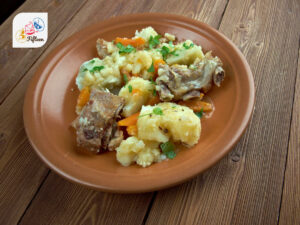
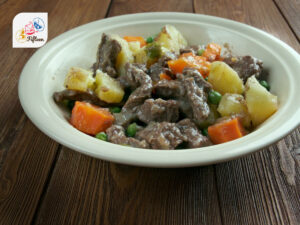
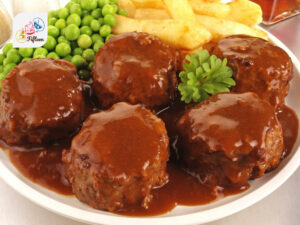
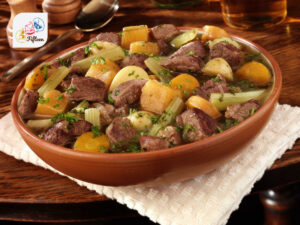
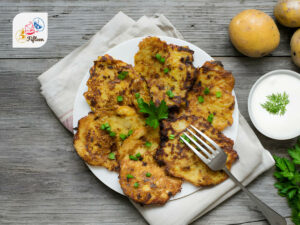





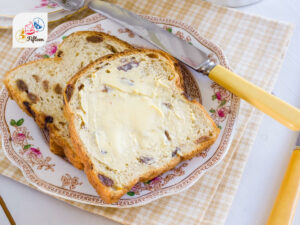
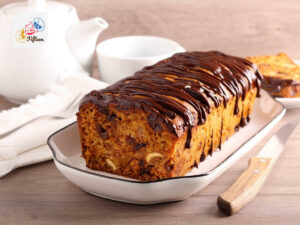
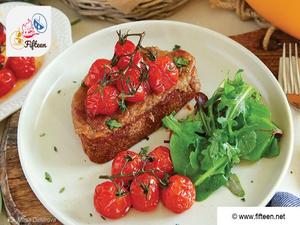
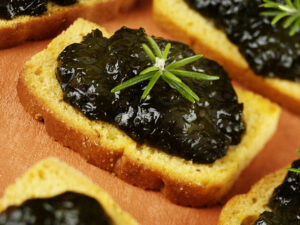

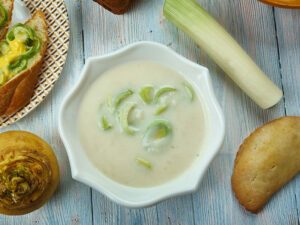
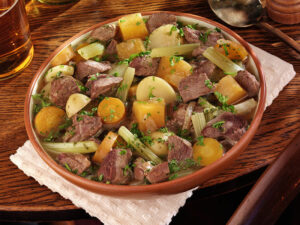
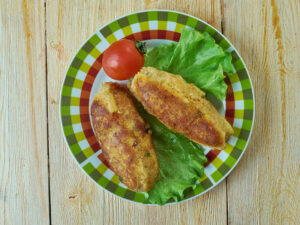
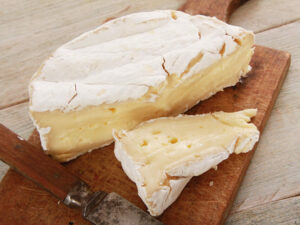
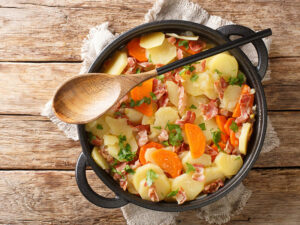
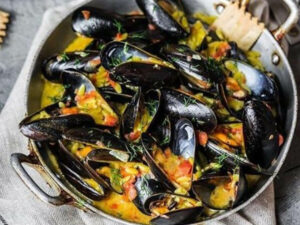
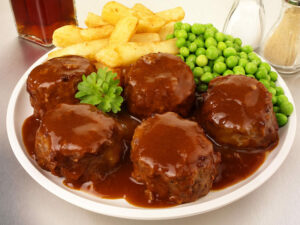
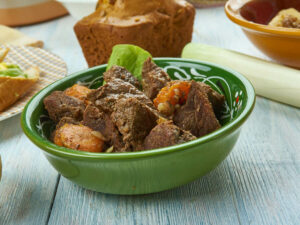
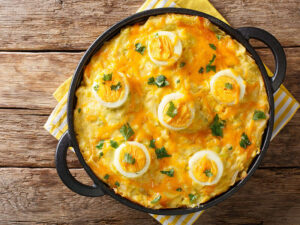
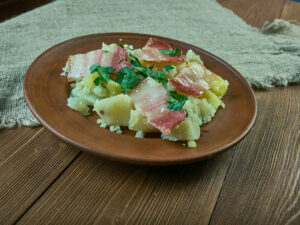
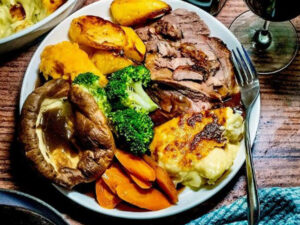
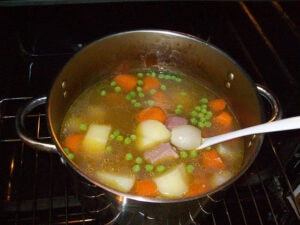


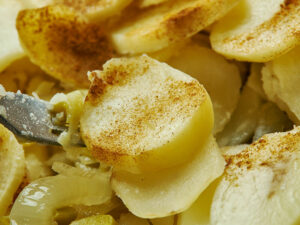
Jamie Scott
Editor in Chief, Senior Content Writer
Expertise
Home Cooking, Meal Planning, Recipe Development, Baking and Pastry, Food Editor, Cooking-video Maker, Western Food Evaluation Expert
Education
Le Cordon Bleu College of Culinary Arts
Local Community College, New York, NY
Jamie Scott is a skilled culinary expert and content creator specializing in Western cuisine. With over 15 years in the culinary field and formal training from Le Cordon Bleu, Paris, Jamie deeply understands how to blend nutrition with delicious flavors. His passion for cooking matches his commitment to making healthy eating accessible and enjoyable.
On Fifteen.net, Jamie brings a fresh perspective to classic dishes and beverages, offering readers insightful recipes, cooking tips, and a fresh view on meal planning that emphasizes taste, health, and simplicity.